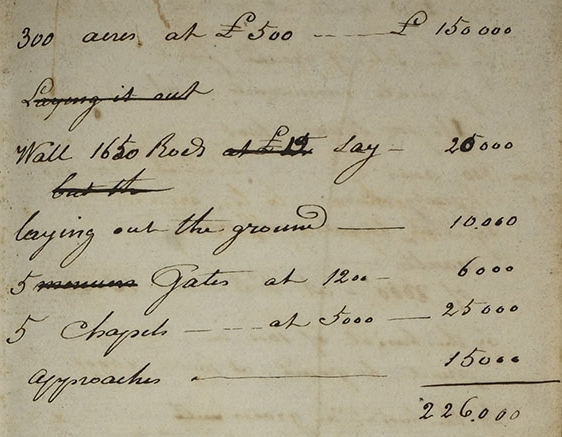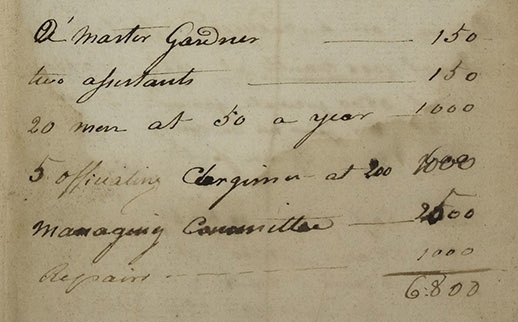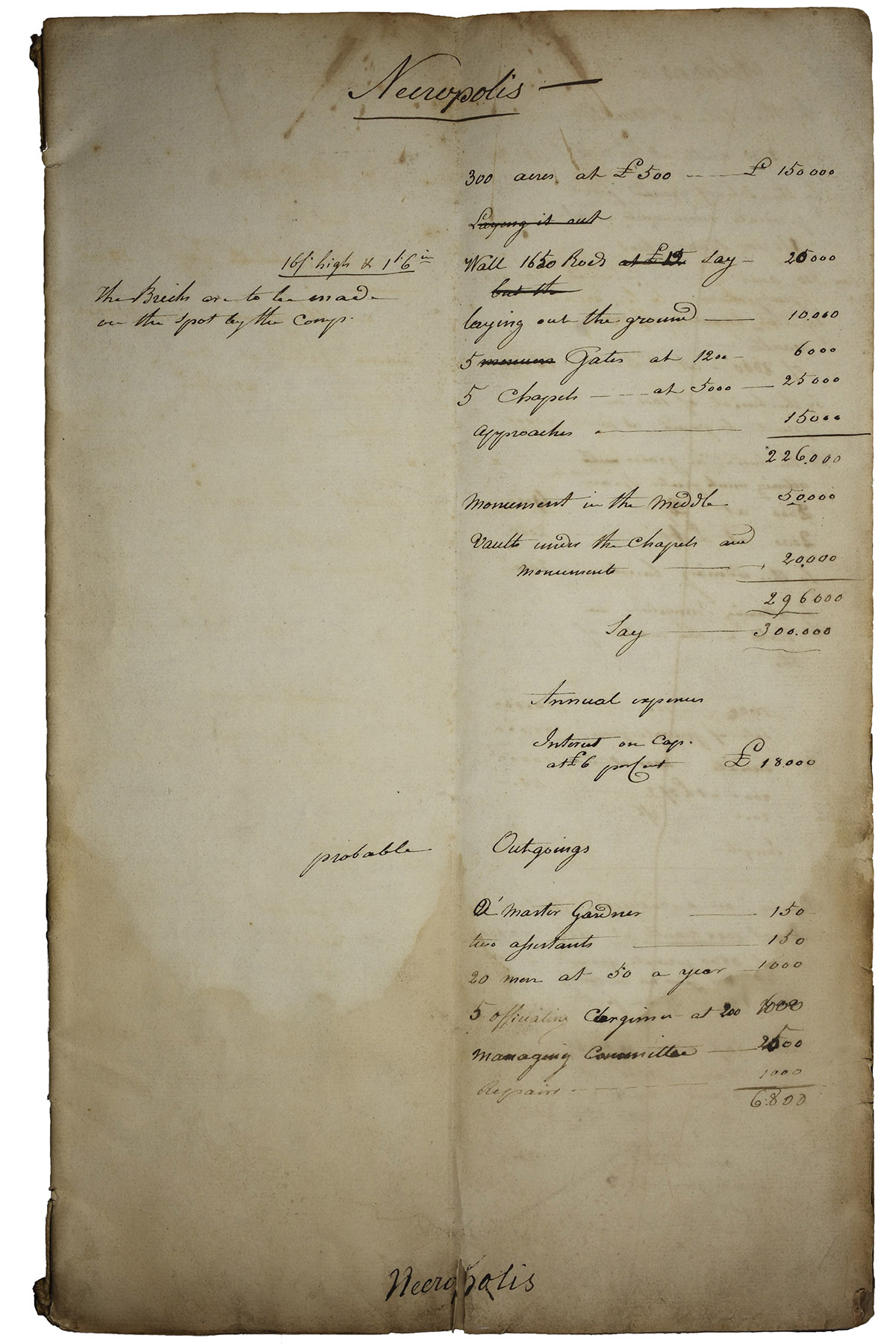Dr Julie Rugg uncovers ambitious early plans for England's first modern cemetery.

These jottings outline the scheme for a grand necropolis, which was to be established on the outskirts of London. The ambition of the scheme is quite breath-taking: the principal site was to cover 300 acres, surrounded by a wall with five separate entrance gates, five chapels and a central monument. The site was to be managed by a master builder, supported by a staff of twenty. The document dates from 1825, which puts it squarely at the centre of what was then a quite fashionable obsession with the notion of a great necropolis for the capital, worthy of comparison with Père Lachaise Cemetery in Paris. This site had been opened in 1804, and was immediately dismissed as a concept too entirely French. However, as more visitors to the site extolled its 'taste and elegance', the reality of burial in London's filthy and overcrowded churchyards was too grim a comparison. There could be no security in these places: the 1820s were the very height of 'resurrection' scares: bodysnatchers were paid for corpses by the inch, and even for teeth. Hence the new proposed Necropolis was to be 'well watched and guarded against violent intrusion'. Indeed, the estimated cost of the wall alone was to be £25,000. The plans contain further details for a second and third site, less grand than the first, each still in excess of 50 acres.

It is the proposed scale of the plans that place this proposal in the realms of rather fanciful projection. There is little coherent reference to funding in the notes, but it's probable that the whole proposal would be launched as a joint-stock enterprise. Indeed, it's unlikely that the estimated cost - £300,000 - could possibly be raised by any other means. This sum makes it very likely that the notes were worked into what became the Prospectus of the General Burial Ground Association, which was launched in 1825 and aimed to sell shares of £50 each, raising £300,000 'to provide a place of sepulture in the immediate vicinity of London similar to the celebrated cemetery of Père Lachaise near Paris.'
The scheme failed, but its proponent - the solicitor George Carden - was successful in his next venture: the General Cemetery Company, launched in 1830. This venture established Kensal Green Cemetery, the very first modern garden cemetery in London. The site was rather more modest in scale, aiming to raise just £45,000 in shares costing £25, but was regarded as an architectural triumph and boasted a royal interment in 1843: that of the Duke of Sussex, Queen Victoria's favourite uncle, who gave her away at her wedding to Prince Albert in 1840.
